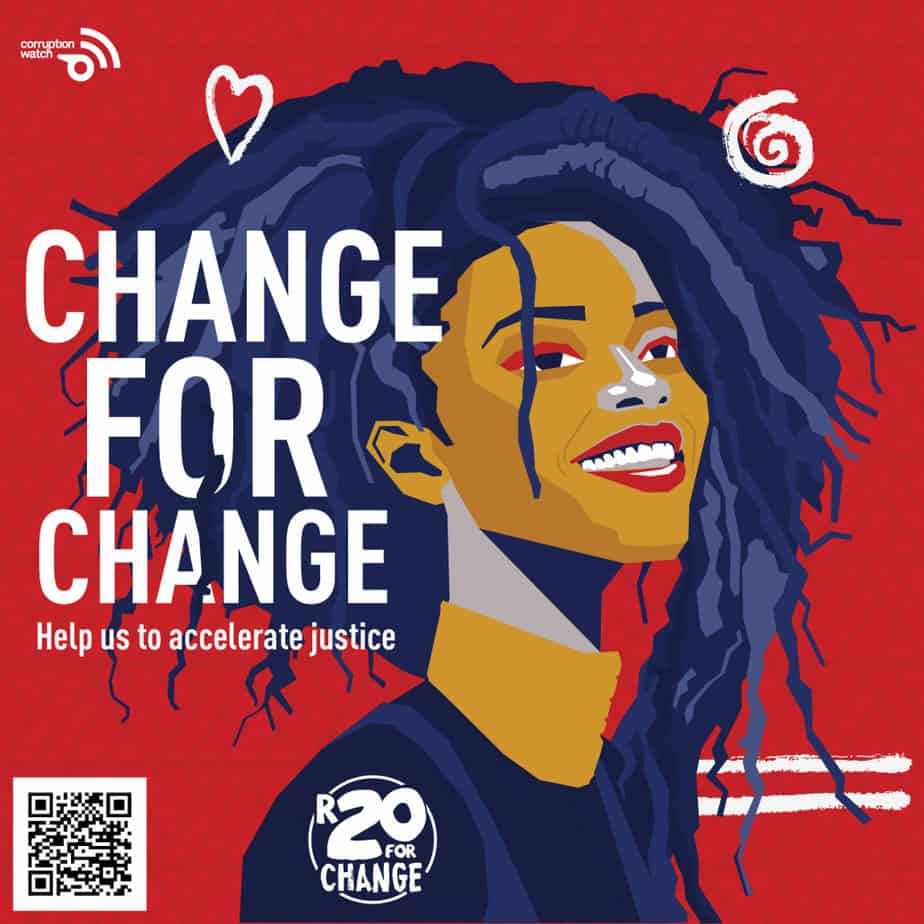|
Getting your Trinity Audio player ready...
|
NOTE TO READERS: The ACT report for 2021 is presented in a different format this year. There is no single published report – rather, this is a multimedia publication with four components.
This press release | An in-depth article | A set of infographics containing the data in visually captivating form – available in high-res also | A 27-minute podcast discussing the report with a focus on whistle-blowers
There are links to all at the bottom of the page, or you may right-click on and save the images in the gallery to the right.







The 2021 Analysis of Corruption Trends (ACT) report and podcast, released today by Corruption Watch, reveals the extent to which corruption has continued unabated during the first half of this year, with 1 964 whistle-blowers reporting acts of corruption in both the public and private sectors.
Those brave enough to expose corruption continue to face threats to their lives from people acting with impunity, and the environment is even more hostile to whistle-blowers, following the violent death of Babita Deokaran in Johannesburg last month.
Reports received by the organisation ranged from extortion and abuse of authority by the police, school principals extorting sexual favours from temporary teachers to safeguard their jobs, and Covid-19 related graft, highlighting the collusion between the public and private sectors. These represent some of the key hotspots over this period.
Police corruption continued to dominate, topping the reports at 12%. Since 2019, Corruption Watch reports have highlighted what appears to be an unabated corruption problem in the policing sector, exacerbated by the powers invested in the police while lockdown regulations are in force. Also prevalent was corruption related to procurement and maladministration in response to the novel coronavirus pandemic, including mismanagement of funds like the temporary employment relief scheme intended to provide support (8%), followed by corruption in public schools (6%) and public housing (4%). It is alarming that corruption with respect to the distribution of food parcels still features during this time.
“When reading the individual accounts of corruption in this report, it is quite evident that the more things change the more they stay the same,” says Melusi Ncala, researcher at Corruption Watch and author of the report. “Communities are vulnerable because police officers care more about securing dodgy deals with criminal networks. Learners in schools and patients in health facilities are at the mercy of self-serving and abusive officials.”
The organisation has noticed similar trends over the years, where the most common types of corruption experienced include maladministration (16%), procurement corruption (16%), and abuse of authority (15%), suggesting that efforts by the public and private sectors to seriously address the corruption problem in South Africa are woefully inadequate. The impact on the majority of people in the country of this failure to act cannot be underestimated, as they continue to be denied access to basic rights and services, and deprived of much-needed protection.
It stands to reason that the majority of complaints – 42% of the total reports – came from the largest province, Gauteng, where Corruption Watch is located, followed by KwaZulu-Natal (10%), the Western Cape (9%), and the Eastern Cape (7%).
Turning to corruption in schools, a number of whistle-blowers in Gauteng, the Eastern Cape and Limpopo pointed to abuse of authority, frequently by principals and the chairpersons of school governing bodies, as a major concern. Also common were reports of embezzlement or theft of school funds, and irregularities in employment processes.
Gauteng and the Western Cape emerged as hotspots of public housing corruption, where most whistle-blowers exposed irregularities in the allocation of RDP houses, fraud in relation to the housing waiting lists, and abuse of authority.
Similarly, the majority of corruption reports dealing with government’s response to Covid-19 occurred in Gauteng (34%), KwaZulu-Natal (18%), and Western Cape (14%), with a significant number emanating from Mpumalanga (10%).
“This continues to be the story of corruption in South Africa according to almost 2 000 brave whistle-blowers,” concludes Ncala. “So when will the tide turn?”
The vulnerability of whistle-blowers in South Africa needs to be addressed as a matter of urgency if there is to be any meaningful shift in the efforts to eradicate corruption. As key role-players in dismantling patterns of abuse and impunity by the corrupt, whistle-blowers deserve commitment and support from the highest echelons of power to ensure their safety, and to create an environment that encourages reporting corruption.
It will take all sectors of society coming together to make serious inroads in tackling the corruption that occurs at every layer of public and private authority in the country. This is the least that is owed to the people represented in this report, who have demonstrated courage in stepping up, driven by their belief in a corruption-free South Africa.
2021 Analysis of Corruption Trends (ACT) main article | Set of infographics – compressed (5 MB zip) | Set of infographics – high-res (19 MB zip) | Infographics as PDF | Podcast on Spotify | Podcast on Anchor | Podcast on Apple | Podcast on Google
Corruption Watch has developed Veza, a specific tool to not only report police corruption, but also to access important information about your local station.
For media queries, please contact:
Nelisa Ngqulana:
073 817 8017 / nelisan@corruptionwatch.org.za







